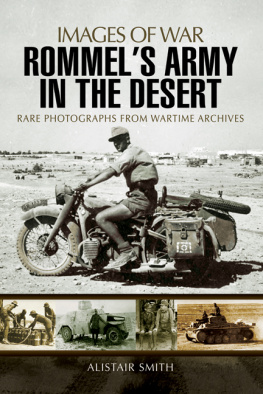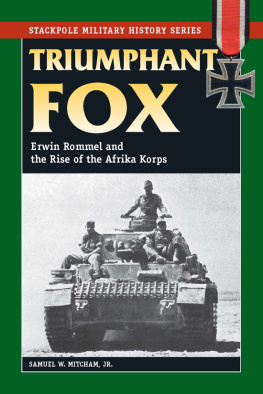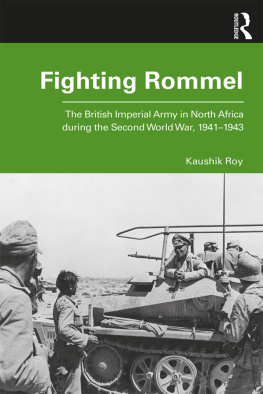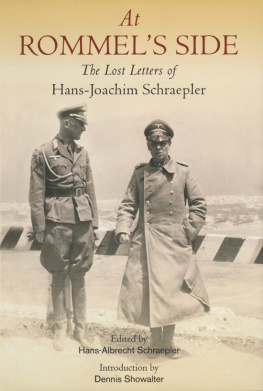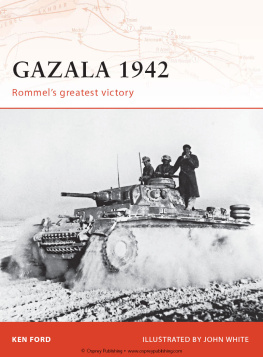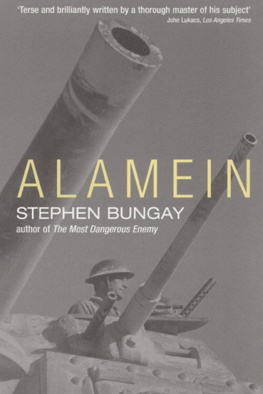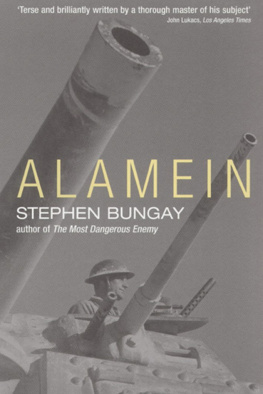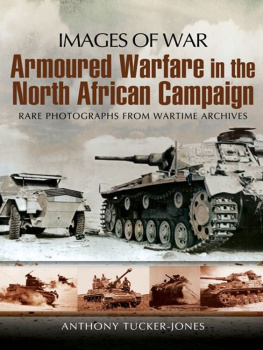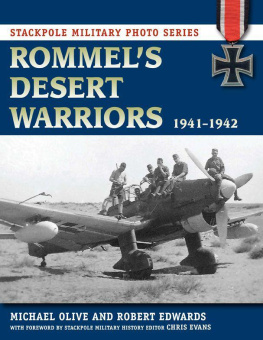

First published in Great Britain in 2013 by
PEN & SWORD MILITARY
an imprint of
Pen & Sword Books Ltd,
47 Church Street, Barnsley,
South Yorkshire.
S70 2AS
Copyright Alistair Smith 2013
ISBN 978-1-84884-807-8
eISBN 978-1-78303-684-4
The right of Alistair Smith to be identified as Author of this Work has been asserted by him in accordance with the Copyright, Designs and Patents Act 1988.
A CIP catalogue record for this book is available
from the British Library
All rights reserved. No part of this book may be reproduced or transmitted in any form or by any means, electronic or mechanical including photocopying, recording or by any information storage and retrieval system, without permission from the Publisher in writing.
Typeset by Mac Style, Beverley, East Yorkshire
Printed and bound in Great Britain by CPI
Pen & Sword Books Ltd incorporates the imprints of
Pen & Sword Books Ltd incorporates the Imprints of Pen & Sword Aviation,
Pen & Sword Family History, Pen & Sword Maritime, Pen & Sword Military, Pen & Sword
Discovery, Wharncliffe Local History, Wharncliffe True Crime, Wharncliffe Transport,
Pen & Sword Select, Pen & Sword Military Classics, Leo Cooper, The Praetorian Press,
Remember When, Seaforth Publishing and Frontline Publishing
For a complete list of Pen & Sword titles please contact:
PEN & SWORD BOOKS LIMITED
47 Church Street, Barnsley, South Yorkshire, S70 2AS, England.
E-mail: enquiries@pen-and-sword.co.uk
Website: www.pen-and-sword.co.uk
Introduction
When German General Rommel and his lead elements of what would become the Afrika Korps landed in Libya in February 1941 nobody could foresee the legendary status they would achieve.
For some they were the perfect desert army. They were a lean, hard-hitting combination of units. Always outnumbered by their Italian allies in the desert, they were to perform absolute miracles on a tiny budget and resources.
North Africa, although a crucial theatre of the war, never achieved the importance of mainland Europe. For two years, however, it gave Britain and the Commonwealth and, later, the Americans, an opportunity to fight Germany.
The Afrika Korps had been sent to North Africa to bolster the faltering Italians. If Germanys ally was decisively defeated in North Africa, the Allies would menace the so-called soft belly of Europe. They could strike against Germany or Italy against Greece to the east, to the coast of southern France in the west.
The North African campaign was fought over one of the most inhospitable environments of the war. The very ground itself was hostile and unyielding. For the Afrika Korps, often outnumbered and out-gunned, they managed to drive the Allies to the very gates of Egypt. Rommel and his Afrika Korps were only finally undone by their defeat at the hands of Montgomery at El Alamein and the subsequent Allied landings to their rear in Tunisia.
This collection of photographs is taken from three albums belonging to members of the much vaunted Afrika Korps. For the first time the daily realities of the North African campaign can be seen from a German point of view. With numerous photographs of vehicles and the rigours of the campaign the combined collection paints a portrait of the rugged and dangerous conditions, as well as the harsh and brutal nature of desert warfare. The photographic albums are owned by James Payne, who runs Through Their Eyes, an unrivalled collection of historic wartime photographs. If readers wish to obtain their own high resolution copies of these photographs then they should contact James at www.throughtheireyes2.co.uk.
In selecting the various shots from a combined collection of over 600, it proved challenging to choose truly representative images. Like many wartime photographic albums, the sadness lies in the fact that the photographers names are completely unknown. No trace of identification is included in the original albums. Very few of the photographs have a date, location, or identify those being pictured. Whilst impeded by this lack of information it is an opportunity to look at the photographs with fresh eyes and not to be swayed by any passing caption or comment. It makes these images more innocent and representative of daily life and reality.
Undoubtedly, like so many British and Commonwealth troops that fought in North Africa, the sight of the barren deserts for the first time for individuals who had been born and raised in the relative lush green of northern Europe must have been a huge shock.
Casualty figures are confused for the Afrika Korps. Technically speaking some German units were not Afrika Korps formations at all. On a conservative level the Germans are thought to have lost some 18,500 men killed. In addition to this nearly 3,500 were posted as missing in action and a further 130,000 were taken as prisoners of war. Their Italian allies of course lost huge numbers of men and materials too. It has been estimated that over 22,000 Italians were killed and at least 340,000 taken prisoner. In all, the war was ruinous in terms of material. Individual figures are difficult to unravel, but between Germany and Italy they lost some 800 aircraft, over 6,000 artillery pieces, 2,500 tanks and a further 70,000 vehicles. Although many of these were destroyed a large number were either captured by the Allies or abandoned due to mechanical failure, or simply because they had run out of fuel.
These photographs seek to chronicle the events that took place between February 1941, with the arrival of the Germans in North Africa, and the final surrender on 13 May 1943.

The harsh reality of death in the desert; German soldiers are digging graves in the sand. It would appear that a burial has just taken place and that the grave is being filled in. Unfortunately it is not possible to read any of the names on the crosses, or to pinpoint the location of this photograph.
Chapter 1
Operation Sonnenblume
On 10 June 1940 Italy declared war on Britain and France. The Italian plan was simple and cynical; France was on her knees and Britain was sorely stretched. The Italians hoped to seize French Colonial possessions in North Africa, take the Alps and the area around Nice. At the same time they would try to grab Egypt and to expand their East African possessions at the expense of the French and the British.
Italy, however, was woefully unprepared for war. British troops in Egypt were undermanned and under-equipped. They were told to defend Egypt but not to make any provocative moves against the Italians. In fact they did, in the form of raids. British troops crossed into Libya, ambushed Italian motorized transport and seized the forts of Capuzzo and Maddalena.
Mussolini was livid and ordered a full-scale assault on the British in Egypt. This finally got underway in mid-September 1940. Five Italian divisions crossed the border; they were spearheaded by 200 tanks. The Italians seized Sollum and then, two days later and some 60 miles further into Egypt, they took Sidi Barrani.
Inexplicably, the Italian forces under Marshal Graziani then stopped and began to dig in. Incredible as it may seem, in the new, fluid Blitzkrieg war of the 1940s, the Italians were prepared to simply sit and consolidate their gains. Had the Italians continued the war in North Africa at this point it would have been over. The British simply lacked the men and resources to withstand a determined assault. Mussolini was, understandably, angry, frustrated and adamant that the offensive should resume. Graziani relented and planned to attack again in October. In the end he changed his mind and continued to fortify his gains. Graziani planned to leave considerable numbers of troops in their fortified camps and use the Italian 10th Army to launch the new offensive.
Next page
